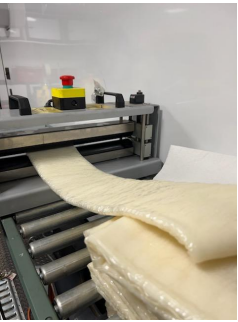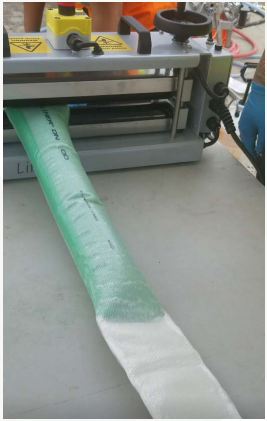Styrene Emission Equipment Innovation and Research
Over the past several years, the Cured in Place Pipe (CIPP) industry has been moving toward a better understanding of the science regarding employee, public safety, and environmental issues surrounding steam cure CIPP installations. While NASSCO has made this a top priority and enlisted leading universities to conduct research projects for worksite emission sampling, and industrial hygiene evaluations as well as potential environmental impacts, there are a variety of new technology advances in the realm of reducing volatile organic compounds (VOCs) during the CIPP installation process and will be covered in this article.
First, let’s review the source of styrene in the CIPP process. Many resins used in the CIPP process contain a monomer called styrene. It is a clear, colorless liquid that is synthesized for commercial use from petroleum and natural gas by-products. However, it should be noted that styrene occurs naturally in the environment and is an inherent component of some commonly consumed foods and beverages like coffee, strawberries, and cinnamon.
Over the past several years, published reports have questioned the safety of emissions from the CIPP process when using styrenated resins. While several organizations, including the Styrene Information and Research Center (SIRC) and the National Association of Sewer Service Companies (NASSCO) have been conducting studies to better ascertain styrene’s safety risk, there have been a number of exciting new technologies brought forward to address emissions concerns.
Some of these are being actively used while others are still in the developmental phase, but all are moving in the direction of reducing the potential risks associated with styrene emissions. Let’s begin with discussing some of the various technologies that were outlined in a November 2021 NASSCO webinar specific to the steam cured CIPP process titled “CIPP and Styrene Emissions”. In this forum presentation, the following technologies were outlined: (1) Activated Carbon; (2) Thermal Oxidation; (3) Biological and Chemical Scrubbers; and (4) a combination of the abovementioned technologies. The general requirements for using these methods in the industry are that they must be economical, effective, portable, and have a small footprint to work with current CIPP equipment packages.

Of these technology options, there are three that have emerged in 2022 to take center stage for emissions reduction: (1) Carbon Filtration; (2) Thermal Oxidation; and (3) Tube Coating Containment. The carbon filtration method, while a bit of an older design, has incorporated new advances in carbon science to create filters that have improved efficiencies to reduce VOC emissions. An example is the 2022 recipient of the NASTT Abbott Innovative Product Award for Rehabilitation. The Aegion LLC filtering system uses selected carbon and a mesh screening system to aid in water removal from steam emissions and enhance carbon functionality. This technology has seen successful implementation in several CIPP projects where the concept has met the targets of being economical, effective, and portable for crew job site use.
Expect continued advances in this technology to enhance filtration capability as well as reduce overall unit weight. The second technology that has made an entry into the CIPP industry is the use of thermal oxidation. Typically, in this process the steam discharge from CIPP curing passes through a catalytic converter where it is exposed to high temperatures. At these temperatures, the VOCs are destroyed at efficiencies of better than 99%. Early research indicates these units will be portable and have various size designs based on the diameter, length, and thickness of the CIPP being installed. This technology will also meet the targets for being economical, effective, and portable for crews. Looking forward, expect continued progress on this technology in the near future.

Finally, there is a third technology advancing regarding the tube coatings used that could reduce styrene levels. While this concept is relatively new for heat cured CIPP, this system was entered by Applied Felts as a nominee for the NASTT Abbott Innovative Product Award. The basic concept in this design, is that a polyester multi-layer felt tube would have a coating that is a styrene barrier. This newly designed coating significantly reduces the penetration of styrene emissions by preventing the migration of styrene through the tube coating during the entire CIPP process. Since it is a coating, it meets all the targeted goals put forward.
In summary, while some scientific studies indicate that styrene released into the environment is broken down quickly and poses a low environmental risk, this is an exciting time for advances to reduce any VOCs released during the CIPP process. These new technologies are most certain to have a positive impact on the industry at it continues to move forward with protecting our infrastructure while being safe for workers, the public and the environment.